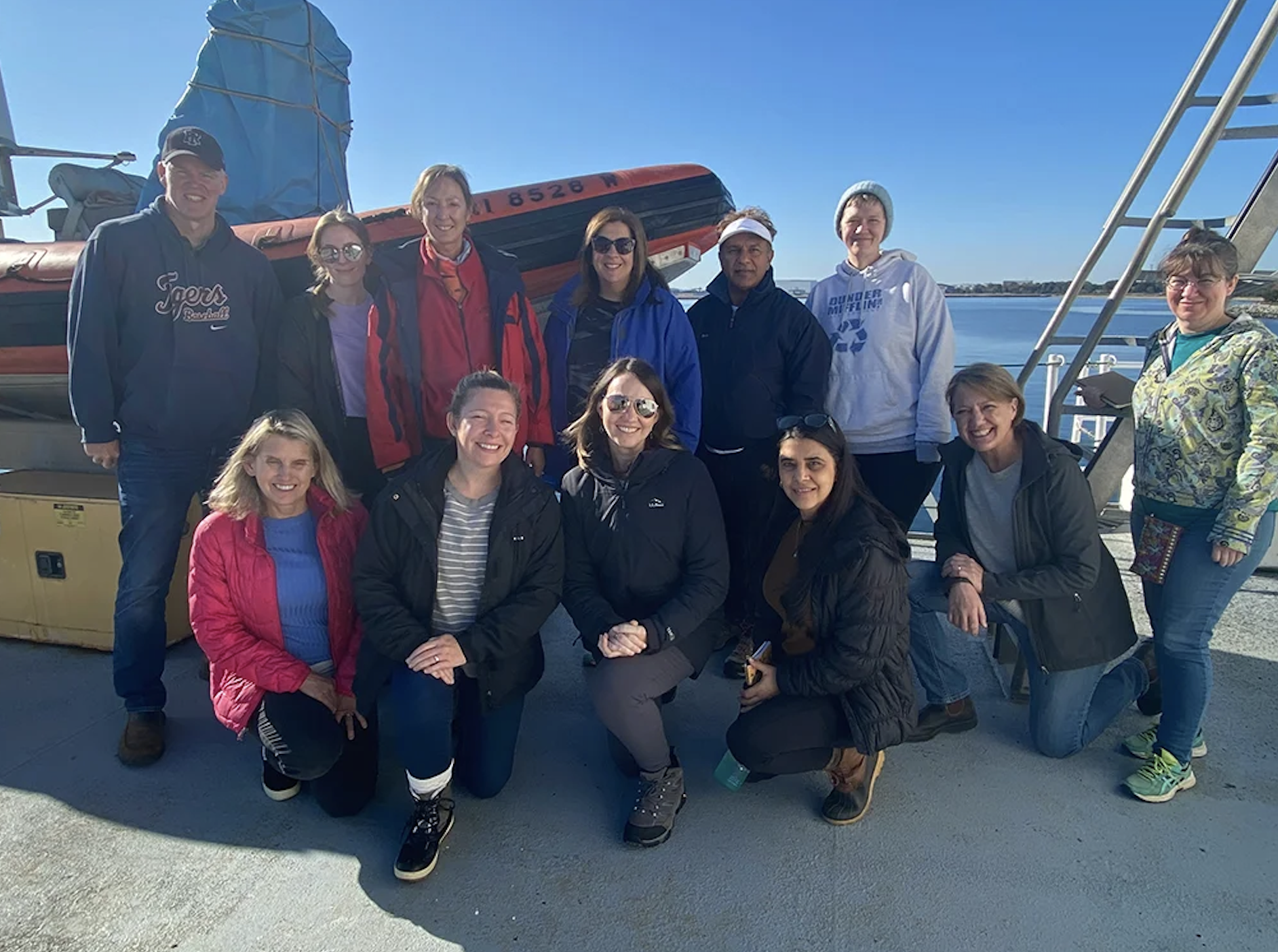Twelve teachers across Rhode Island board URI’s Endeavor ship to gain oceanography experience. PHOTO CREDIT: uri.edu
Twelve teachers all across the state were chosen to participate in the Rhode Island Teachers at Sea program, in which they were able to board the University of Rhode Island Graduate School of Oceanograpy’s Endeavor ship to conduct research at sea and gain experience as oceanographers.
David Smith, a professor and associate dean of the GSO at URI, is in charge of handling the educators on the ship by answering questions for them and teaching them everything they need to know from what they research.
This program has been going on for over a decade, according to Andrea Gingras, assistant director of public engagement for URI’s Graduate School of Oceanography, and it is a very popular program that a lot of teachers apply for.
“We had a large pool of teachers this year who were interested in participating and we chose 12,” Gingras said. “They were from across the state, many cities and towns represented as well as many grade levels. So we had elementary school teachers, middle school teachers, as well as high school teachers participate.”
Both Smith and Gingras mentioned that this is a state funded project which allows them to be able to go on this endeavor each year. Gingras also talked about how the GSO submits a proposal each year to have teachers aboard the research vessel endeavor as part of a professional development experience and to learn more about life or doing oceanographic research at sea.
Smith spoke on the importance of this endeavor and what the teachers learn from this trip and what they do with the information. He said that teachers ask major questions so that they can bring those answers back to their students once they learn about it.
Smith also mentioned how it’s “very interesting” how the different teachers explain it to their students, comparing an elementary school teacher talking about what they learned versus a high school science teacher talking about the experience.
“I find that fascinating, how they work together on trying to interpret what we’re doing out there for their students,” Smith said. “We try to get them to think about how they can incorporate some of these questions into their curriculum. How they can come up with simple exercises and allow them to get these concepts across.”
Smith went over the schedule for the cruise and how it goes typically. He said that they leave on a Friday morning and return Sunday. However, he has all the teachers who are going on the boat for dinner the Thursday night before to talk and get to know each other. He also mentioned that they all get everything on board that same Thursday night as well just to ensure that they’re not pushing back the crew.
Smith also mentioned the ship’s crew and how kind and accommodating they are with everyone going aboard the ship. He talked about how the crew does a lot by deploying and recovering equipment, cleaning and hauling equipment. The crew is also very eager and willing to answer all the questions that the teachers have for them as well.
“The crew is very helpful in realizing that none of those teachers have ever done any of this before,” Smith said. “Normally on a normal cruise you have people there that already have experience doing this and there will be some people that it will be their first trip.”
For these teachers’ students, Gingras talked about how they ask the teachers to create lesson plans and activities based on their experience on the ship. It potentially creates a new topic being brought into the classroom because not a lot of teachers have taught oceanography before, Gingras said.
“But for other teachers, this is a way to supplement the topics that they’re already teaching,” Gingras said. “So it’s providing an opportunity for more students to learn about ocean science through this experience that their teachers had.”
Smith added onto this by talking about how they do certain things such as water column profiling, more physics related, sediment grabs and other things. Their main focus is on the biology of the water and the mud they’re gathering and they will look at different aspects of oceanographic research, and in turn, the teachers will know how to show their students everything they’ve learned and bring questions into the classroom.
To learn more about the GSO and the work that they do, you can visit their website.

